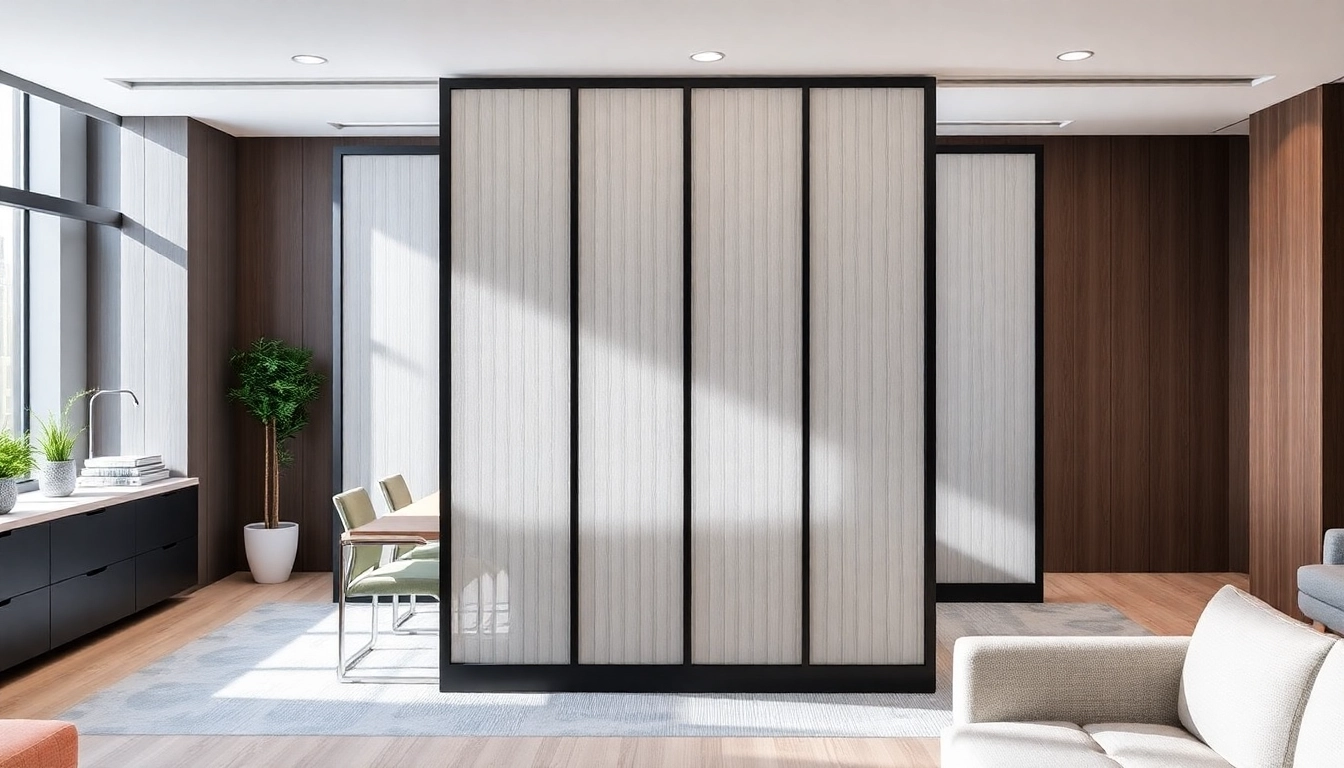Mastering Interior Painting: Techniques, Tips, and Cost Insights
Understanding Interior Painting Basics
What is Interior Painting?
Interior painting is the process of applying paint, stains, or finishes to the interior surfaces of a building, particularly walls and ceilings. It transforms the aesthetic of a space and can significantly affect its ambiance. Interior painting is not just about changing colors; it also involves different techniques, finishes, and preparations that contribute to the overall outcome. A well-executed interior paint job can elevate the look of your home or office, complementing your furnishings and enhancing your experience within the space. To learn more about effective solutions and services in interior painting, explore interior painting options that suit your style.
Key Tools and Materials for Interior Painting
Successful interior painting requires a range of tools and materials to ensure a professional finish. Essential items include:
- Paint – Choose high-quality interior paint that suits the finish you desire (matte, satin, semi-gloss).
- Paint Brushes – Various sizes for different surfaces; angled brushes work best for trim and corners.
- Rollers – A standard roller for walls and a mini roller for smaller areas.
- Drop Cloths – Protect floors and furniture from paint spills.
- Painters Tape – Helps achieve crisp lines and prevents paint bleeding onto unwanted surfaces.
- Ladder – Necessary for reaching tall walls and ceilings.
- Paint Tray – For holding paint while using rollers.
- Putty Knife – Ideal for filling in holes or imperfections before painting.
- Sandpaper – To smooth surfaces before applying paint.
Common Interior Painting Techniques
There are several techniques that can be used to enhance the aesthetic appeal of your interior spaces. The most common include:
- Brushed Finishes – Used for edges and details, giving a polished and precise look.
- Rolled Finishes – Ideal for large areas like walls and ceilings, providing a smooth and uniform application.
- Sponging and Stippling – These techniques add texture and depth to walls, creating dynamic visual effects.
- Accent Wall Painting – A feature wall using a contrasting color to add interest to a room.
- Faux Finishes – Techniques like marbling or rag rolling that mimic the look of other materials, such as marble or wood.
Choosing Colors and Aesthetics
The Psychology of Color in Interior Painting
Color plays a crucial role in interior design, affecting mood, perception, and even behavior. For instance, warm colors like red and orange can create an energizing atmosphere, while cool colors like blue and green typically promote calmness. Understanding color psychology can immensely enhance the effectiveness of your interior painting project.
Popular Color Trends for Interiors
Color trends in interior painting evolve similarly to fashion. Some current popular trends include:
- Earthy Tones – Colors such as terracotta, olive green, and muted browns are increasingly favored as they bring an organic feel to spaces.
- Pastel Shades – Soft pastel hues create gentle, tranquil environments, which are especially popular in bedrooms and nurseries.
- Bold, Dark Colors – Colors like navy blue or charcoal can add depth and sophistication to spaces when used judiciously, often for accent walls or cabinetry.
Creating Palette Combinations for Different Spaces
When choosing colors, consider the specific functions and atmospheres of each room. For example:
- Living Rooms – Ideal for social interaction, a combination of warm and cool tones, such as beige and teal, can balance energy and relaxation.
- Bedrooms – Explore soothing palettes with soft blues or greens that promote restfulness.
- Kitchens – Consider brighter colors like yellows or whites that invigorate the space and enhance natural light.
Preparation and Planning for Your Project
Steps to Prepare a Room for Painting
Preparation is critical to a successful paint job. Follow these steps:
- Clear the Space – Remove furniture and cover floors with drop cloths.
- Repair Wall Damage – Patch holes or cracks, and sand down rough surfaces for a smooth finish.
- Clean the Walls – Dust and wash walls to remove stains and grease, which can affect paint adhesion.
- Plan Your Colors – Test color swatches in the room to see how they look at different times of the day.
Estimating Time and Materials Needed
Careful estimation helps in managing your time and budget effectively. Consider factors such as:
- The size of the area to be painted.
- The type of paint selected (latex, acrylic, or enamel).
- Additional finishes or detailed work required.
- Tackling labor if hiring outside help; professionals can dramatically reduce time on larger projects.
Hiring vs. DIY: Making the Right Choice
Deciding whether to hire a professional or take on the painting project yourself depends on various factors:
- Complexity of the Job – DIY might suffice for smaller areas or simple tasks. Complex jobs with intricate colors or finishes may necessitate professional help.
- Time Constraints – Consider your schedule. Professionals can often complete jobs faster with mastery and tools.
- Budget – DIY projects can save money, but they require investment in quality tools and materials, alongside your time and effort.
Executing the Perfect Interior Paint Job
Best Practices for Interior Painting
To achieve a high-quality finish, adhere to these best practices:
- Always Start with the Ceiling – This prevents dripped paint from ruining your walls.
- Apply Primer – Especially important for unpainted surfaces and drastic color changes.
- Use Quality Tools – Invest in good brushes and rollers to achieve professional results.
- Work in Sections – Paint one section at a time to ensure even coverage and a consistent finish.
Common Mistakes to Avoid in Interior Painting
Even minor oversights can detract from the beauty of your project. Avoid these common errors:
- Skipping Preparation Steps – Inadequate cleanup or prep can lead to paint peeling or poor adherence.
- Choosing the Wrong Paint Finish – Different finishes can dramatically affect the final look, so match the finish with the room’s purpose.
- Neglecting Lighting Conditions – Always check how colors appear in various light conditions; a color you love in the store might look different indoors.
Tools and Techniques for a Professional Finish
A professional finish can be achieved through various techniques such as:
- Feathering – Blending edges where two paint colors meet to create a seamless transition.
- Back-Rolling – Re-rolling over areas previously brushed to even out texture and promote adhesion.
- Using Extensions – For hard-to-reach areas, utilize roller extensions to minimize strain and improve efficiency.
Costs and Considerations in Interior Painting
Average Costs for Interior Painting Projects
The costs associated with interior painting can vary significantly based on numerous factors. On average:
- Small Rooms (e.g., bathrooms) – Typically range from $60 to $400.
- Medium Rooms (e.g., bedrooms) – Start from approximately $600 to $1,240.
- Large Rooms (e.g., living rooms) – Can go up to $900 to $1,600.
Factors Influencing Interior Painting Costs
Several factors will influence the cost of your project:
- Size of the Area – The larger the area, the higher the cost in both time and materials.
- Paint Choice – High-quality paints will have a higher upfront cost but offer better durability and finish.
- Labor Rates – Vary based on location and the experience level of the hired painters.
- Condition of the Walls – Repairs prior to painting can increase costs if extensive preparation is required.
Budgeting Tips for Your Interior Painting Project
Effective budgeting is key to a successful interior painting project. Here are some tips:
- Get Multiple Quotes – When hiring a professional, obtain quotes from different contractors to compare costs and services.
- Plan for Extras – Set aside a small buffer of 10-15% for unforeseen expenses such as extra paint or repair materials.
- DIY Where Possible – Tackle simpler tasks yourself to save on labor costs, keeping in mind to balance the time and effort involved.














Post Comment